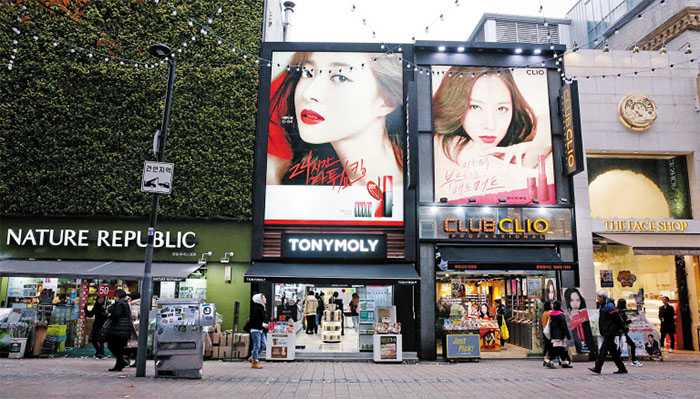Cheap Korean Cosmetics Lose Luster
27 November, 2018

Cosmetics manufacturer Able C&C, which makes the massively cheap-and-cheerful Missha line, suffered a W19.6 billion operating loss in the first three quarters of this year (US$1=W1,129). The only other times the company suffered operating losses in its 20-year history was in 2000, when it had only just been established, and in 2006 following massive new investments.
Able C&C spearheaded the low-budget cosmetics boom in the early 2000s with dedicated, styled brand outlets that appeal especially to Asian tourists. But now it seems the shine is coming off.
The Face Shop, another manufacturer that opened in 2003 and flourished at the height of the boom, saw revenues plunge 16.5 percent to W470.4 billion last year, and operating profit halved to W24.1 billion. The number of outlets has dropped by one-third over the last four years.
Rival manufacturer Skin Food, which opened in 2004, went into court receivership last month and laid off 181 staff.
Among latecomers, Tony Moly sold off its headquarters building last year but continues to post losses. Its losses totaled W1.91 billion last year and already reached W1.7 billion until September this year.
Nature Republic is also faring badly, posting W9.6 billion in losses in 2016 and W1.7 billion in 2017, though it has managed to eke out a meager W930 million in profits in the first three quarters of this year.
A main reason is a sharp decline in Chinese tourists following an unofficial boycott of Korea. Chinese tourists used to buy huge quantities of affordable Korean cosmetics.
But analysts say these cosmetics companies also failed to keep up with changing industry trends from offline to online channels. A recent development is the resurgence of big chains selling a wide range of beauty products under one roof like CJ's OliveYoung, GS Retail's Lalavla and Lotte Shopping's LOHBS.
There are now over 1,400 of these one-stop health and beauty outlets across the country, mostly in malls. Shinsegae Department Store recently opened a chain of mid to high-priced cosmetics stores called Chicor while Emart brought the U.K.'s Boots to Korea.
Home shopping and online sales are also increasing. Aekyung Industry saw cosmetics sales on home shopping channels rise from W133.4 billion in 2016 to W263.7 billion in the first three quarters of this year. Cosmetics now account for 50.4 percent of Aekyung's total sales, up from 26.3 percent in 2016.
One staffer at a cheap cosmetics maker said, "We should have expanded our sales channels to online and one-stop outlets but couldn't due to stiff resistance from existing store owners, plus we feared a decline in revenues."
Another reason for the disappointing earnings is the fact that the market is simply saturated. According to the Ministry of Food and Drug Safety, the number of cosmetics manufacturers and sellers in Korea rose from 6,422 in 2015 to a whopping 10,080 last year, almost doubling in just two years.
"Nowadays, original development manufacturers handle everything from development to production if a small company brings a new idea for a product, so practically anyone can enter the market," one industry insider said.
At Cosmax, a major cosmetics ODM company, revenues rose from W379 billion in 2013 to W1.03 trillion in the first three quarters of this year.
Kim Joo-deok at Sungshin Women's University said, "Retail channels have become so diverse so quickly that companies that can't adapt will continue to suffer losses."
TAG(s):
